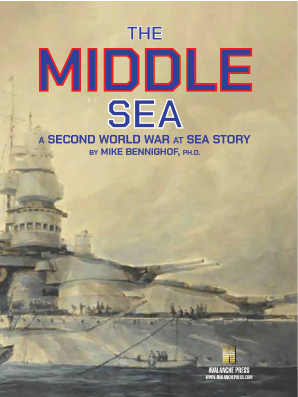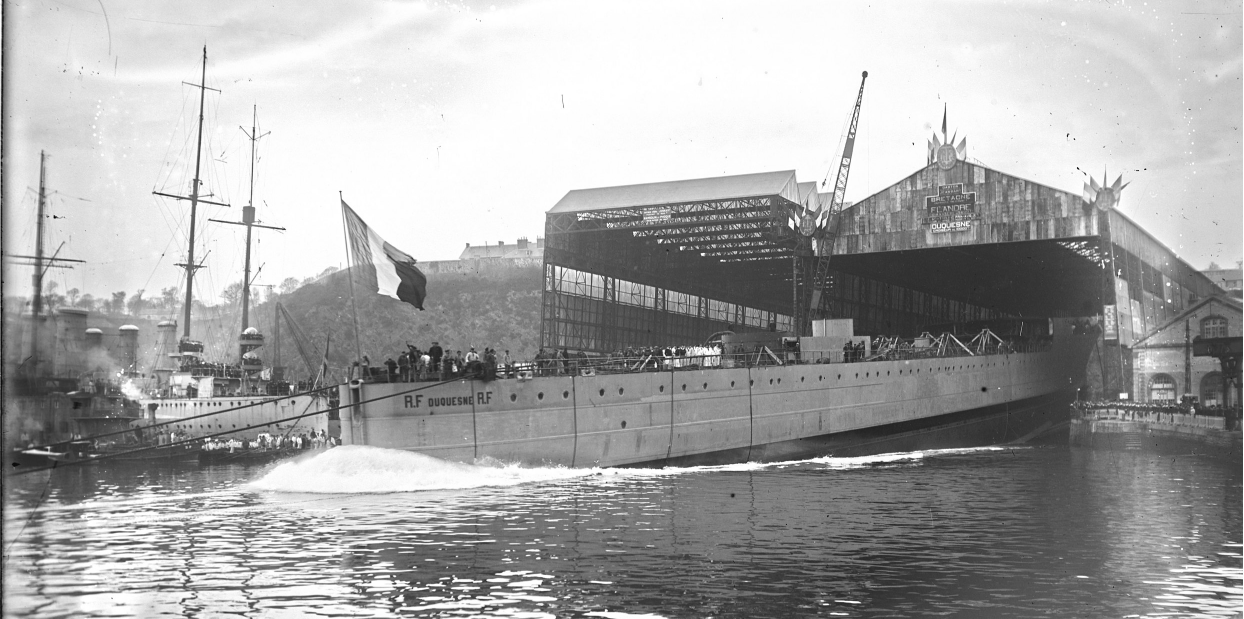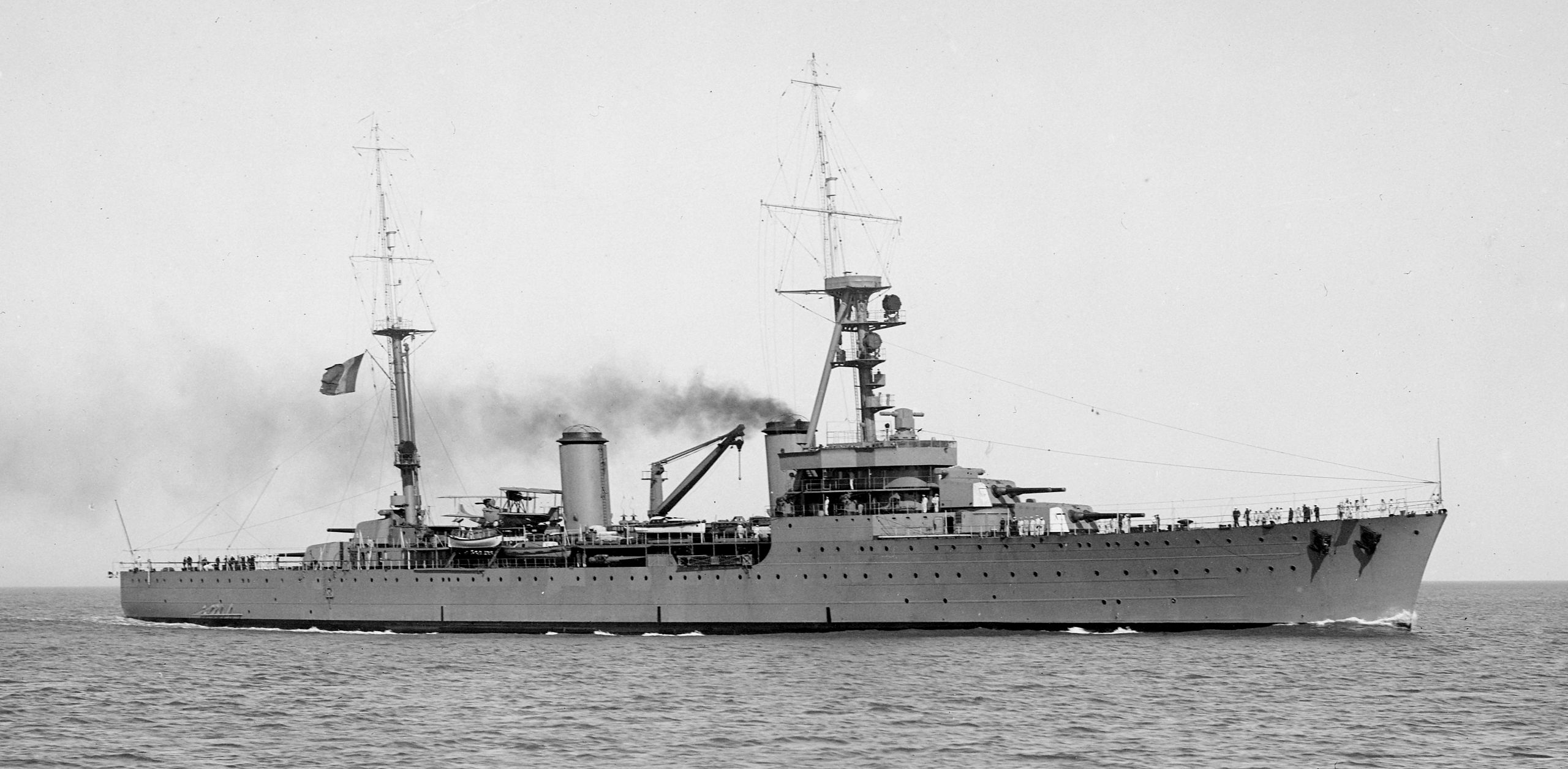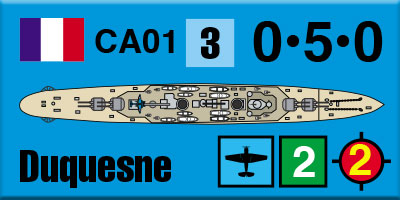The Middle Sea:
Duquesne Class Cruisers
by Mike Bennighof, Ph.D.
July 2023
 Only after the end of the First World War did France’s Marine Nationale address its pressing need for modern cruisers. The design for the new light cruisers of the Duguay-Trouin class had been finalized during the last round of talks for the 1922 Washington naval limitations agreement. That pact settled on a maximum caliber of 203mm (8 inches) for a cruiser’s main armament, and 10,000 tons for its displacement. Only after the end of the First World War did France’s Marine Nationale address its pressing need for modern cruisers. The design for the new light cruisers of the Duguay-Trouin class had been finalized during the last round of talks for the 1922 Washington naval limitations agreement. That pact settled on a maximum caliber of 203mm (8 inches) for a cruiser’s main armament, and 10,000 tons for its displacement.
Those dimensions suited British practice; the British delegation did extremely well at the talks. France had no cruisers meeting those specifications at any stage of design. The French answer to the problem would be to scale up the Duguay-Trouin light cruiser design to the size of a heavy cruiser. This ship, Duquesne, and her sister Tourville would become France’s first and deeply unsatisfactory Treaty cruisers.
At first glance, the Duguay-Trouin design seemed admirably suited for up-scaling. The four-turret layout above decks could simply to enlarged; the internal arrangement of four boiler rooms and two engine rooms would need to be shuffled around slightly, but this would not be difficult. And as the Naval General Staff predicted, the Service Technique des Constructions Navale (SCTN), in charge of the design, turned out the draft fairly quickly without encountering major problems.
The problems with this approach only became evident much later. Duguay-Trouin combined good speed (a designed speed of 34 knots, which none of the class ever met) with a near-total lack of armor protection (a 20mm belt and 14mm deck, enough to keep out splinters and nothing more). For her projected missions, the lack of protection wasn’t much of a drawback, when many light cruisers of the time had no armor at all. What she could not out-fight, she could out-run.
The heavier armament - turrets, weapons and the barbettes and magazines underlying them, plus ammunition - totaled more than twice what the 155mm equivalents had weighed. On top of that, the hull needed strengthening to absorb the heavier recoil of the larger weapons. Duquesne carried eight 203mm Model 1924 rifles, the same weapon that would arm all French heavy cruisers.

Launching Duquesne. 17 December 1925.
Anti-aircraft protection represented an increase over Duguay-Trouin, eight rather than four 75mm Model 1922 nigh-angle guns, plus eight more 37mm Model 1925 light guns. Duquesne had only six torpedo tubes rather than the twelve of the light cruiser, in two triple mounts, one on either beam. Three reloads were carried in the amidships torpedo workshop located between the mounts where the fresh fish could be loaded into either mount.
Duquesne also sported an amidships trainable catapult and two aircraft, but no hangar. One aircraft would be stowed on the catapult, and the other on the boat deck. After landing, the seaplane would be plucked from the water by the boat crane.
Duquesne had even less protection than the light cruiser, with thin plating around her magazines and steering gear, and on the turrets and conning tower. On the plus side, she had fairly intense internal subdivision, with seventeen watertight compartments, each of them with its own ventilation and pumping systems. The re-arrangement of the engine and boiler rooms meant that she could likely survive a single mine or torpedo hit without being struck dead in the water, though this proposition would never be tested in combat.

Cruisers Duquesne (left) and Suffren seen at Brest, 15 October 1934. |
The new cruisers would be expected to depend on their speed to protect them from well-armed enemies. The enormous power plant could pump out 120,000 horsepower (more than the battle cruiser Dunkerque), to drive four shafts. Neither ship could sustain their designed speed of 34 knots on trials, much less reach the desired 36 knots. Duquesne only made 34 knots for four hours of her six-hour while Tourville never reached it at all, maxing out at 33.2 knots.
The 1924 program authorized the two cruisers, with Duquesne laid down at the Brest Arsenal in October 1924 and Tourville at the Lorient Arsenal in April 1925. They were commissioned in January and March, 1929, respectively. They spent most of the next ten years with the French Mediterranean Fleet, making training and goodwill tours to the United States and to France’s African colonies.
By the late 1930’s, they had been surpassed by foreign heavy cruisers that could both outpace their speed as Duquesne and Tourville aged, and included meaningful armor protection, like the Italian Zara class. The Marine Nationale considered converting both to aircraft carriers, but their relatively small size and narrow beam meant that they could not carry a useful air group and the project went nowhere.
The June 1940 Armistice found both of them at the British base of Alexandria, Egypt, along with the heavy cruiser Suffren and light cruiser Duguay-Trouin. All four ships remained their, forbidden to leave, until their crews agreed to join the Free French movement in May 1943. They received minimal upgrades at Dakar in French West Africa – the Americans declined to use any of their shipyard capacity to upgrade the badly-outdated cruisers. Afterwards Duquesne conducted a few bombardments of German-held French ports while Tourville was placed in reserve in Bizerte, Tunisia.

Heavy cruiser Tourville seen in 1929.
After the war, both ships undertook transport missions to French Indo-China and a handful of bombardments there. They were finally stricken in the mid-1950’s and scrapped; by that point they had not seen any use since 1947.
By rushing to lay down heavy cruisers before the Italians could do so, the Marine Nationale wasted its funding over a question of prestige that made no difference on any practical level – given the post-war political and economic environment, France and Italy were highly unlikely to go to war anytime soon. French naval architects turned out a very fine heavy cruiser design by the end of the decade with Algérie. Rushing to lay down a cruiser based on a decade-old design for a light cruiser saddled the Marine Nationale with a pair of ships that couldn’t even be converted to other uses.
Both Duquesne and Tourville make their Second World War at Sea debut in the upcoming expansion set The Middle Sea. They do see some limited action there, but the Second World War ended before any of the French ships in the Mediterranean could undertake many missions – Duquesne and Tourville were on their way to bombard Sicily when word of the Armistice arrived and they turned back to Alexandria and irrelevance.

You can order La Royale right here.
Click here to join the Gold Club.
See your Gold Club Insider newsletter for ordering information.
Sign up for our newsletter right here. Your info will never be sold or transferred; we'll just use it to update you on new games and new offers.
Mike Bennighof is president of Avalanche Press and holds a doctorate in history from Emory University. A Fulbright Scholar and NASA Journalist in Space finalist, he has published a great many books, games and articles on historical subjects; people are saying that some of them are actually good.
He lives in Birmingham, Alabama with his wife and three children. He will never forget his Iron Dog, Leopold.
Want to keep Daily Content free of third-party ads? You can send us some love (and cash) through this link right here.
|
